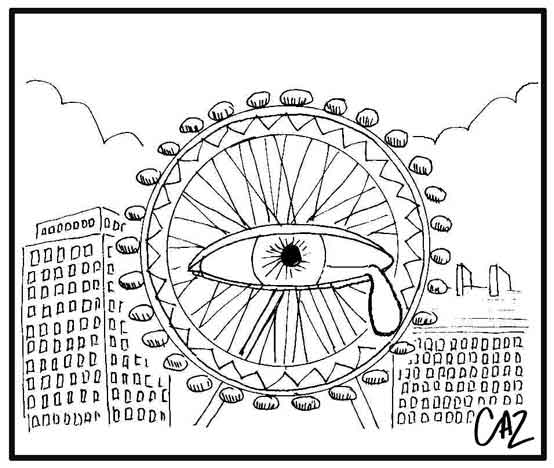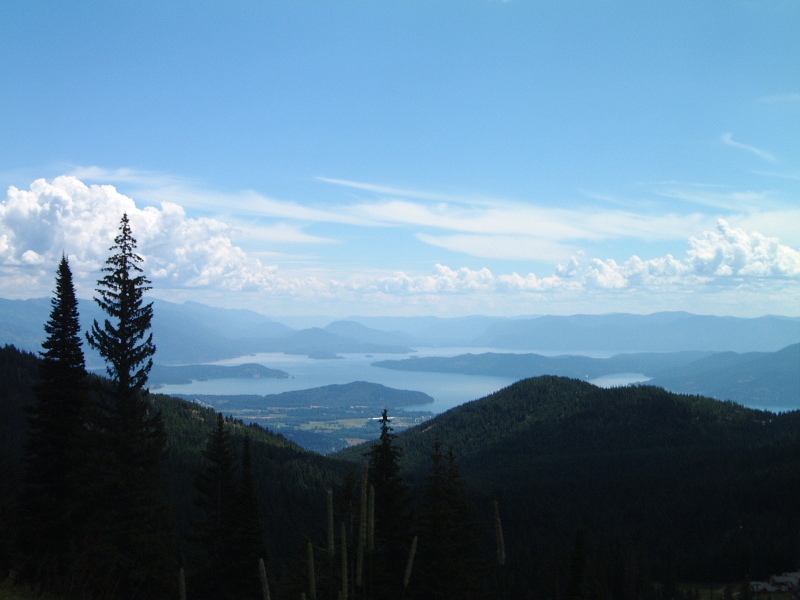July 28, 2005
July 22, 2005
Cheers and Raspberries
Sean Carroll, over at Cosmic Variance has posted a non-string theorist’s “defence” of string theory. It’s a little absurd that, given all we’ve learned in the past two decades, the field needs “defending.” But Sean’s post, and the ensuing comment thread are pretty good. Filter out the inevitable crackpots, and you can read a sober, and pretty even-handed discussion of the issues, with Peter Woit asking the the tough questions, and Clifford Johnson, Wolfgang Lerche, Bob McNees, Ann Nelson, Moshe Rozali and yours truly responding.
NBB.
Atom 1.0
The Atom Specification has been finalized. And Sam Ruby has asked that people migrate away from Atom 0.3 to the final Atom 1.0. Using Niels Leenheer’s very nice guide to upgrading, it took maybe 5 minutes to upgrade my Atom feed from 0.3 to 1.0.
If you’re using the old feed, be forewarned that it will go away at some point in the not-too-distant future. Once you’ve upgraded your aggregator software to a version that supports Atom 1.0. (NetNewswire 2.0.1, for instance, already supports Atom 1.0), point you aggregator at the new feed instead. The same holds for the feeds at the String Coffee Table.
July 19, 2005
Advice to the Young
Looking back at my response to Marty Tysanner, it occurs to me that, perhaps, he deserves a more lengthy explanation of why I found the notion, that the panel discussion at String 2005 would affect his choice of what to work on, so utterly wrong-headed.
Update (8/1/2005):
On the off-chance that I’ve failed to convince Marty that he’d be better off throwing I Ching sticks, he can read Dennis Overbye’s summary of the panel discussion.July 18, 2005
Cosmic Variance
Bring out the heavy hitters.
Sean Carroll, JoAnne Hewett, Clifford Johnson, Mark Trodden and Risa Wexler have started a WordPress-based group blog called Cosmic Variance.
Since Clifford had been rather steadfast in his insistence that he would never take up blogging, I, for one, see some sort of tipping point …
And speaking about physicists, blogging, and WordPress, I learned some interesting news at Strings 2005, which I will doubtless tell y’all about anon.
July 16, 2005
Strings 2005 Wrapup
Feeling somewhat burnt out, I’ve kinda fallen down on the whole live-blogging thing. I’ll try to make partial amends here, but, generally, you’ve have to blame the organizers of Strings 2005 for scheduling so many interesting talks during the latter days of the conference.
July 14, 2005
Day 4
Beisert gave a beautiful review of progress on spin chains and integrability of both N=4 SYM and string theory in . I think perhaps we’ll spend some time this Fall, in the Geometry and String Theory Seminar at UT, reviewing this stuff.
Maldacena and Lunin gave talks about their joint work, some of which I blogged about before. I won’t repeat what I wrote previously, but there was one remark from Juan’s talk that struck me as an important insight. From the free Fermion description, one gets a rather concrete picture of “summing over nontrivial topologies” on the gravity side. This corresponds to including nontrivial topologies (disconnected dropplets) of the Fermi surface. Juan suggested that small droplets, near an otherwise regular Fermi surface — things that might be called “spacetime foam” — are really indistinguishable from gravitons. Counting them separately from the ripples on the Fermi surface, which are interpreted as gravitons, is overcounting configurations.
I’ve long been of the opinion that string theory gives zero evidence for the popular idea of spacetime foam. Juan’s remark seems to confirm that.
July 13, 2005
The Cobbler’s Children
One of the disadvantages of chairing a session is that you end up concentrating on the clock, and trying to keep the speakers on schedule, rather than concentrating on the talks themselves.
Shamit Kachru talked about his beautiful paper with DeWolfe, Giryavets and Taylor on flux compactifications of Type IIA. A lot of effort has gone into the study of IIB flux compactifications, and the feeling was that these were somehow “typical” of (but more tractable than) generic string compactifications in which the moduli are stabilized. But these Type IIA flux compactifications behave qualitatively differently. Tadpole cancelation doesn’t produce a bound on the RR four-form flux. So the flux is a free parameter, , and one finds an infinite family of vacua parameterized by , accumulating at large radius () and weak coupling ()1.
Given this (and other) qualitative differences between the IIB and IIA cases, we ought to be circumspect about naïvely hoping that the sorts of behaviour one finds in these backgrounds generalize to other (heterotic, …) classes of compactifications.
Vijay Balasumramanian gave one of his patented enthusiastic talks about some forthcoming work, in which he and collaborators have a rather detailed proposal for the AdS/CFT duals of the microstates of AdS blackholes. These are (multi-)traces of strings of fields in the gauge theory. The claim is that, to “most” probes, these states look precisely thermal. But, to a very few, there is a large, highly non-thermal, response. I hope I have the time to give a detailed account when the paper(s) come out.
While most of my colleagues were visiting Niagra Falls, I spent a few hours this afternoon in the company of Joe Clark, which is a whole 'nother story …
1And, unlike in Freund-Rubin or related “compactifications”, even these “large-radius” vacua have a clean parametric separation of the Kaluza-Klein modes,
from the low-energy 4D degrees of freedom. On the other hand, despite the fact that the string coupling is going to zero and the radius is getting large, Shamit seemed to argue that the tunnelling probability between these vacua is not going to zero as . This is a bit subtle. The domain wall tension, measured in 4D Planck units, goes to zero quite fast at large-. However, the bulk energy gain goes to zero, as , itself, is going to zero even faster.
July 12, 2005
If It’s Tuesday, This Must Be Toronto
Toronto is undergoing what the locals consider a heat wave. While the absolute temperatures may not exceed those in Austin, it’s a lot more humid here, and air conditioning is less ubiquitous/effective.
Continuing my random, unsystematic and thoroughly idiosyncratic reportage…
July 11, 2005
Playing Catchup
I don’t know that I will be quite so assiduous about blogging from Strings 2005 as I was last year in Paris (I, II, III). I hope, at least to use this as an opportunity to make some comments on developments I’d meant to blog about before, but never got around to.
Since the slides are online, you can check out the other talks yourself.
July 8, 2005
Intellectual Bankruptcy Watch, II
I wrote a while back about the intellectual relativism and anti-scientific *-scepticism that has, in recent years, become the norm on the American Right. So you probably won’t be surprised to learn what happened when Ben Adler, at TNR-online, decided to ask a few prominent American Conservatives about their thoughts on the subject of Evolution.
Bill Kristol (The Weekly Standard), Grover Norquist (Americans for Tax Reform), David Frum (American Enterprise Institute and National Review), Stephen Moore (Free Enterprise Fund), Jonah Goldberg (National Review), Charlie Krauthammer (The Washington Post), William Buckley (National Review), John Tierney (The New York Times), James Taranto (The Wall Street Journal), Norman Podhoretz (Commentary), Richard Brookhiser (National Review), Pat Buchanan (The American Conservative), Tucker Carlson (MSNBC), Ramesh Ponnuru (National Review) and David Brooks (The New York Times) — a veritable who’s-who of Right-Wing opinion-makers — were asked their opinions on Evolution, Intelligent Design, and what, if anything, about the above should be taught in the public schools.
With the notable exceptions of Krauthammer and Brookhiser, the response was disappointing to anyone looking for signs of intellectual health on the American Right.
P.Z. Meyers, among others, took a stab at categorizing their mostly pathetic responses. (See also, P.Z.’s brilliant send-up of Todd Zywicki’s lame attempt at a ripost.) But, whether brainless or merely spineless, lumping these top-drawer conservatives into categories tends to obscure the unique qualities of their individual approaches to this fear-provoking (lest James Dobson catch wind of what they said) question.
So, herewith, some awards.
July 7, 2005
London Calling

For my friends and colleagues in London.
July 5, 2005
Squaring the Circle
John Quiggin wants to know how to square the circle on the Poincaré plane. I don’t know how Bolyai did it, but the problem is easy enough.
July 3, 2005
Broken Object Support
Longtime readers of this blog know that I strive to use the best available technology to deliver resolution-independent (to the greatest extent possible) content. Equations are set in MathML; figures are drawn as Scalable Vector Graphics.
Today’s topic is those SVG figures. And how one browser horribly spooges its support for the <object> element.
July 2, 2005
In-In
My colleague, Steve Weinberg, has a new paper out, calculating loop corrections to the correlations of fluctuations in inflationary cosmology.
Departures from Gaussianity of the perturbations has been a subject of much interest. A few years ago, Maldacena computed the contribution to the 3-point function of the fluctuations, which follows from the nonlinearities of the GR action. As you might suspect, Steve shows that Juan’s result is tantamount to computing some tree-graphs, not in standard perturbation theory, but in Schwinger’s In-In formalism. he then proceeds to calculate the one-loop corrections.
July 1, 2005
Trackback Spambot
For the past 5 months, one particular group of trackback spammers been hammering away at this blog. They started at the beginning of February, and I wrote briefly about them at that time.
Despite their initial lack of success, they persisted in trying to post trackbacks through a dizzying array of anonymous proxies. I had to fine-tune my blocking methods, and a quiet arms-race ensued.

 Posts with this logo use
Posts with this logo use 






